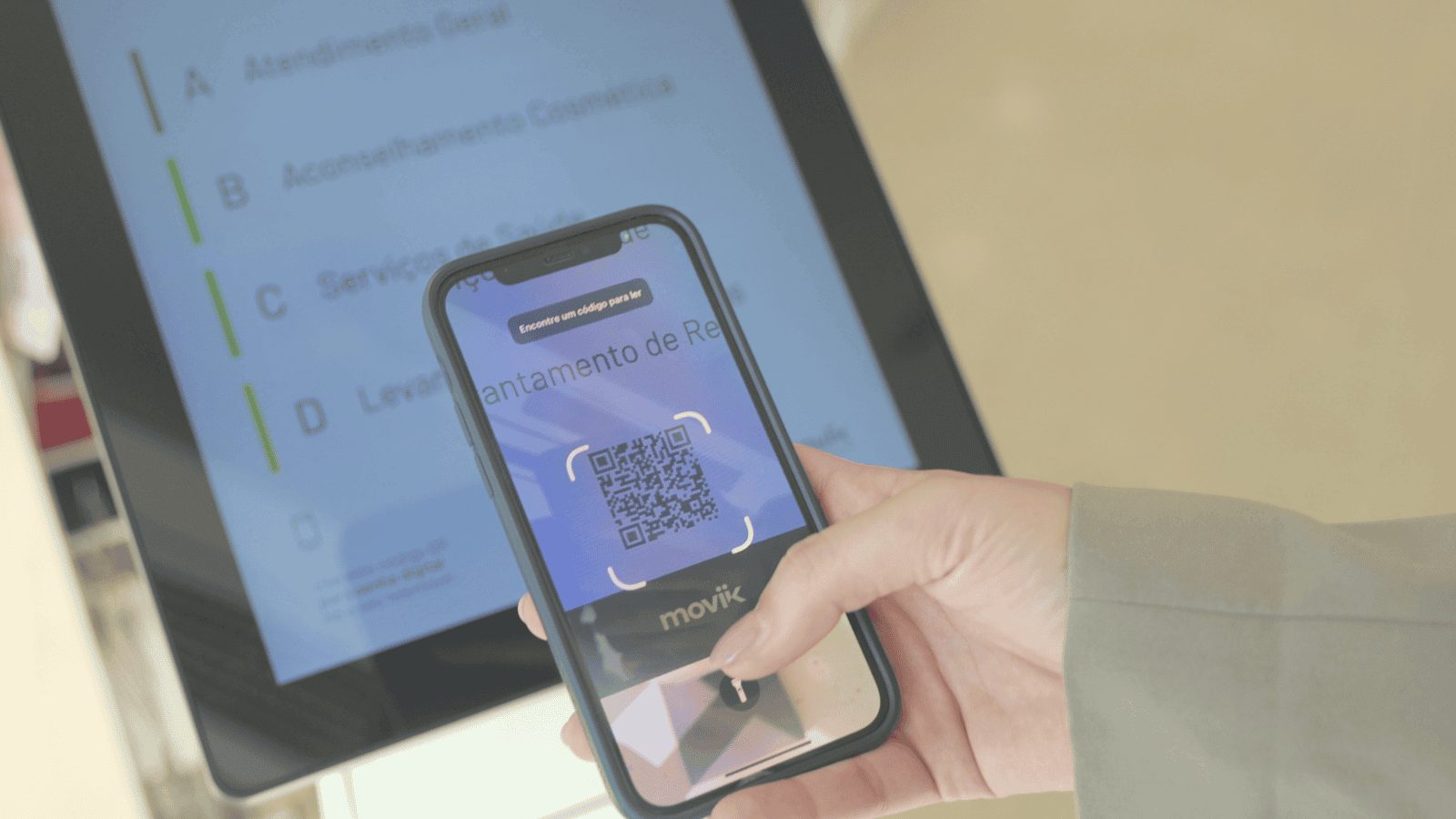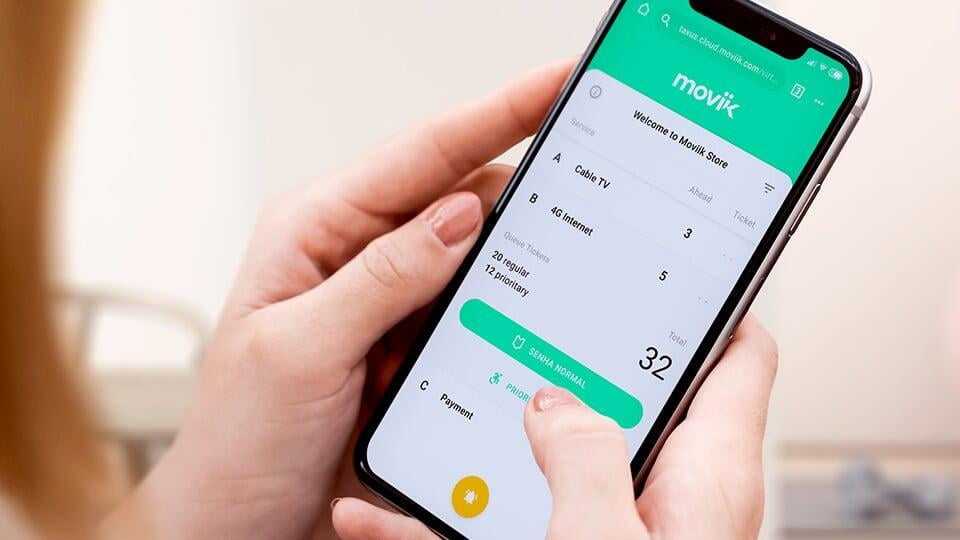The era of simply managing queues to "be polite" is long gone. For any executive steering a large organization — be it a major bank, a public health service, or a high-volume retailer — the flow of people is not an operational hassle, it is a strategic asset. Yet, the industry has long been fixated on a single, misleading metric: Average Wait Time (AWT).
A true expert in service architecture understands that AWT is incomplete. It's a passenger plane's speedometer as it tells you how fast you're going, but not if you're hitting the revenue target. To elevate flow management from a necessary cost to a demonstrable profit driver, C-level executives must shift their focus to three specific, high-impact Key Performance Indicators (KPIs) provided by modern, intelligent platforms.
The real cost of frustration: Abandonment Rate by Service
The real cost of frustration: Abandonment Rate by Service
The single most painful metric for any business is the customer who simply walks away. This is not just a missed transaction; it’s a direct vote of no confidence in your efficiency, and a lost long-term customer relationship.
The old systems tracked overall abandonment, which is too vague to act on.
The modern imperative is the Abandonment Rate by Service.
Actionable Intelligence: An intelligent system provides granular data on where the friction occurs. By tracking this KPI, leaders can pinpoint the exact service or location causing bottlenecks.
If the abandonment rate for Click & Collect is high, you immediately know your in-store process for retrieving online orders is flawed. Addressing this flaw does not reduce a "wait time" figure; it recovers tangible revenue that was literally walking out the door. This KPI moves the discussion from customer satisfaction to financial leakage control.
Eliminating the "Idle Time" Drain: average service time per staff/service type
Eliminating the "Idle Time" Drain: average service time per staff/service type
In a service economy, your most expensive asset is the time of your highly-trained personnel. Inefficient flow management creates two critical productivity leaks: staff overload and staff idle time.
While standard metrics measure how long an employee takes with a customer, the expert KPI analyzes productivity with higher resolution: Average Service Time per Staff Member and Service Type.
Actionable Intelligence: A robust backoffice system provides the transparency needed to address these issues. By analyzing this KPI, executives can redistribute workload in real-time to eliminate queues, set realistic service goals, and identify which employees require targeted training. This transforms the flow management system into a strategic HR and operations optimization tool, ensuring that capital expenditure on payroll is maximized.
Measuring digital transformation: virtual vs. physical queue ratio
Measuring digital transformation: virtual vs. physical queue ratio
Every major service organization is pushing towards digital adoption, whether through mobile apps, website scheduling, or digital ticketing (QR codes). This transformation is crucial for reducing overheads and improving customer convenience.
The KPI that validates this investment is the Virtual vs. Physical Queue Ratio.
The Expert Insight: This metric measures the success of your digital transition. If you heavily invested in a virtual ticketing system, but 80% of your customers are still taking a paper ticket from a kiosk, your adoption strategy (communication, convenience, placement) is failing. The goal is to shift the majority of the "waiting" experience from the stressful physical environment to the customer's comfortable digital space.
Actionable Intelligence: When a customer uses a digital ticket, they are empowered to wait outside the physical service area. Tracking this ratio gives C-level executives a direct measure of their digital ROI. High virtual adoption means: 1) less stress in the branch, 2) fewer customer walkaways, and 3) a clear validation of the digital convenience model. This is the metric that proves your service infrastructure is future-proof and meeting modern customer demands.
The Backoffice mandate
The Backoffice mandate
Moving beyond the outdated AWT is not just about better data; it’s about establishing a culture of real-time accountability. The true value of a modern, cloud-based platform lies in its ability to not only track these advanced KPIs but to deliver the insights to managers in minutes, not months.
By focusing on these three critical metrics — Abandonment, Staff Service Time, and Digital Adoption — service leaders can finally treat their customer flow as the revenue driver it is. This is the difference between simply reacting to lines and proactively designing a profitable customer experience.
The hidden cost of traditional queues
The hidden cost of traditional queues
Poorly managed lines hurt more than just the immediate sale:
Lost sales: Shoppers may abandon purchases if the wait feels excessive.
Negative perception: Even great products can be overshadowed by poor waiting experiences.
Operational inefficiency: Staff spend time calming frustrated customers instead of providing service.
A bad queuing experience reduces loyalty and repeat visits. A seamless digital-first experience, on the other hand, builds trust and brand differentiation.
Virtual queueing in action: Moviik's Digital Ticket
Virtual queueing in action: Moviik's Digital Ticket
At Moviik, we designed the Digital Ticket to meet today’s retail challenges:
Customers join a queue instantly by scanning a QR code or link.
They receive real-time updates on their place in line.
They’re notified when it’s their turn, so they never lose their spot.
They enjoy freedom of movement while waiting.
For retailers, this means:
Higher customer satisfaction and stronger brand perception.
Increased revenue opportunities while customers browse.
Smarter, data-driven operations with insights into customer flow.
This isn’t just queue management software — it’s a step forward in digital-first customer experience.
How to roll out mobile-first queuing in 30 days
How to roll out mobile-first queuing in 30 days
- Entry points: Place QR codes at entrances, service desks, and collection points.
- No-app join: Use QR codes, web browser or SMS/WhatsApp to maximize adoption.
- Expectation setting: Show position + ETA at all times.
- Queue segmentation: Separate quick services (returns, pickups) from complex requests.
- Smart notifications: Ping at T-10 min, T-2 min, and grace-period fallback.
- Accessibility: Provide kiosks and printed tickets for non-smartphone users.
- Analytics tracking: Monitor Average Wait (AWT), Queue Abandonment Rate (QAR), Service Time, and Attach Rate.
Beyond queues: shaping the future of retail experience
Beyond queues: shaping the future of retail experience
Mobile-first waiting doesn’t just remove frustration. It aligns retail with how people live today: connected, digital, and time-conscious.
Virtual queuing also opens the door to future innovation:
Personalization – Deliver tailored promotions while customers wait.
Integration – Connect with loyalty programs or mobile apps.
Scalability – Extend the same technology to other industries like healthcare, finance, and transport.
FAQ: Virtual Queuing in Retail
FAQ: Virtual Queuing in Retail
What is virtual queuing?
Virtual queuing lets customers join a line digitally via QR or link, track their place in real time, and receive notifications when it’s their turn.
Do customers need to download an app?
No. Moviik’s Digital Ticket is browser-first, with optional SMS/WhatsApp alerts. Research shows 91% of customers dislike being forced to install an app.
How accurate are wait times?
Moviik provides real-time ETAs with buffer rules, ensuring customers know when to return.
What about customers without smartphones?
Moviik supports kiosks, printed tickets, and digital signage for inclusivity.
How does virtual queuing increase sales?
41% of shoppers browse more when waiting virtually, boosting discovery and purchases.
The new standard is here
The new standard is here
Waiting will always be part of retail. But how customers wait is changing forever.
With over a decade in queue management and customer experience, I can confidently say that the rise of virtual queuing in retail is one of the most important shifts in recent years.
Solutions like Moviik’s Digital Ticket empower customers to take control of their time, while giving retailers the tools to optimize service, build loyalty, and drive growth.
In today’s retail landscape, freedom is the ultimate currency. And enabling customers to wait without standing still has become one of the most valuable experiences a brand can offer.
The era of simply managing queues to "be polite" is long gone. For any executive steering a large organization — be it a major bank, a public health service, or a high-volume retailer — the flow of people is not an operational hassle, it is a strategic asset. Yet, the industry has long been fixated on a single, misleading metric: Average Wait Time (AWT).
A true expert in service architecture understands that AWT is incomplete. It's a passenger plane's speedometer as it tells you how fast you're going, but not if you're hitting the revenue target. To elevate flow management from a necessary cost to a demonstrable profit driver, C-level executives must shift their focus to three specific, high-impact Key Performance Indicators (KPIs) provided by modern, intelligent platforms.
The real cost of frustration: Abandonment Rate by Service
The real cost of frustration: Abandonment Rate by Service
The single most painful metric for any business is the customer who simply walks away. This is not just a missed transaction; it’s a direct vote of no confidence in your efficiency, and a lost long-term customer relationship.
The old systems tracked overall abandonment, which is too vague to act on.
The modern imperative is the Abandonment Rate by Service.
Actionable Intelligence: An intelligent system provides granular data on where the friction occurs. By tracking this KPI, leaders can pinpoint the exact service or location causing bottlenecks.
If the abandonment rate for Click & Collect is high, you immediately know your in-store process for retrieving online orders is flawed. Addressing this flaw does not reduce a "wait time" figure; it recovers tangible revenue that was literally walking out the door. This KPI moves the discussion from customer satisfaction to financial leakage control.
Eliminating the "Idle Time" Drain: average service time per staff/service type
Eliminating the "Idle Time" Drain: average service time per staff/service type
In a service economy, your most expensive asset is the time of your highly-trained personnel. Inefficient flow management creates two critical productivity leaks: staff overload and staff idle time.
While standard metrics measure how long an employee takes with a customer, the expert KPI analyzes productivity with higher resolution: Average Service Time per Staff Member and Service Type.
Actionable Intelligence: A robust backoffice system provides the transparency needed to address these issues. By analyzing this KPI, executives can redistribute workload in real-time to eliminate queues, set realistic service goals, and identify which employees require targeted training. This transforms the flow management system into a strategic HR and operations optimization tool, ensuring that capital expenditure on payroll is maximized.
Measuring digital transformation: virtual vs. physical queue ratio
Measuring digital transformation: virtual vs. physical queue ratio
Every major service organization is pushing towards digital adoption, whether through mobile apps, website scheduling, or digital ticketing (QR codes). This transformation is crucial for reducing overheads and improving customer convenience.
The KPI that validates this investment is the Virtual vs. Physical Queue Ratio.
The Expert Insight: This metric measures the success of your digital transition. If you heavily invested in a virtual ticketing system, but 80% of your customers are still taking a paper ticket from a kiosk, your adoption strategy (communication, convenience, placement) is failing. The goal is to shift the majority of the "waiting" experience from the stressful physical environment to the customer's comfortable digital space.
Actionable Intelligence: When a customer uses a digital ticket, they are empowered to wait outside the physical service area. Tracking this ratio gives C-level executives a direct measure of their digital ROI. High virtual adoption means: 1) less stress in the branch, 2) fewer customer walkaways, and 3) a clear validation of the digital convenience model. This is the metric that proves your service infrastructure is future-proof and meeting modern customer demands.
The Backoffice mandate
The Backoffice mandate
Moving beyond the outdated AWT is not just about better data; it’s about establishing a culture of real-time accountability. The true value of a modern, cloud-based platform lies in its ability to not only track these advanced KPIs but to deliver the insights to managers in minutes, not months.
By focusing on these three critical metrics — Abandonment, Staff Service Time, and Digital Adoption — service leaders can finally treat their customer flow as the revenue driver it is. This is the difference between simply reacting to lines and proactively designing a profitable customer experience.
The hidden cost of traditional queues
The hidden cost of traditional queues
Poorly managed lines hurt more than just the immediate sale:
Lost sales: Shoppers may abandon purchases if the wait feels excessive.
Negative perception: Even great products can be overshadowed by poor waiting experiences.
Operational inefficiency: Staff spend time calming frustrated customers instead of providing service.
A bad queuing experience reduces loyalty and repeat visits. A seamless digital-first experience, on the other hand, builds trust and brand differentiation.
Virtual queueing in action: Moviik's Digital Ticket
Virtual queueing in action: Moviik's Digital Ticket
At Moviik, we designed the Digital Ticket to meet today’s retail challenges:
Customers join a queue instantly by scanning a QR code or link.
They receive real-time updates on their place in line.
They’re notified when it’s their turn, so they never lose their spot.
They enjoy freedom of movement while waiting.
For retailers, this means:
Higher customer satisfaction and stronger brand perception.
Increased revenue opportunities while customers browse.
Smarter, data-driven operations with insights into customer flow.
This isn’t just queue management software — it’s a step forward in digital-first customer experience.
How to roll out mobile-first queuing in 30 days
How to roll out mobile-first queuing in 30 days
- Entry points: Place QR codes at entrances, service desks, and collection points.
- No-app join: Use QR codes, web browser or SMS/WhatsApp to maximize adoption.
- Expectation setting: Show position + ETA at all times.
- Queue segmentation: Separate quick services (returns, pickups) from complex requests.
- Smart notifications: Ping at T-10 min, T-2 min, and grace-period fallback.
- Accessibility: Provide kiosks and printed tickets for non-smartphone users.
- Analytics tracking: Monitor Average Wait (AWT), Queue Abandonment Rate (QAR), Service Time, and Attach Rate.
Beyond queues: shaping the future of retail experience
Beyond queues: shaping the future of retail experience
Mobile-first waiting doesn’t just remove frustration. It aligns retail with how people live today: connected, digital, and time-conscious.
Virtual queuing also opens the door to future innovation:
Personalization – Deliver tailored promotions while customers wait.
Integration – Connect with loyalty programs or mobile apps.
Scalability – Extend the same technology to other industries like healthcare, finance, and transport.
FAQ: Virtual Queuing in Retail
FAQ: Virtual Queuing in Retail
What is virtual queuing?
Virtual queuing lets customers join a line digitally via QR or link, track their place in real time, and receive notifications when it’s their turn.
Do customers need to download an app?
No. Moviik’s Digital Ticket is browser-first, with optional SMS/WhatsApp alerts. Research shows 91% of customers dislike being forced to install an app.
How accurate are wait times?
Moviik provides real-time ETAs with buffer rules, ensuring customers know when to return.
What about customers without smartphones?
Moviik supports kiosks, printed tickets, and digital signage for inclusivity.
How does virtual queuing increase sales?
41% of shoppers browse more when waiting virtually, boosting discovery and purchases.
The new standard is here
The new standard is here
Waiting will always be part of retail. But how customers wait is changing forever.
With over a decade in queue management and customer experience, I can confidently say that the rise of virtual queuing in retail is one of the most important shifts in recent years.
Solutions like Moviik’s Digital Ticket empower customers to take control of their time, while giving retailers the tools to optimize service, build loyalty, and drive growth.
In today’s retail landscape, freedom is the ultimate currency. And enabling customers to wait without standing still has become one of the most valuable experiences a brand can offer.







